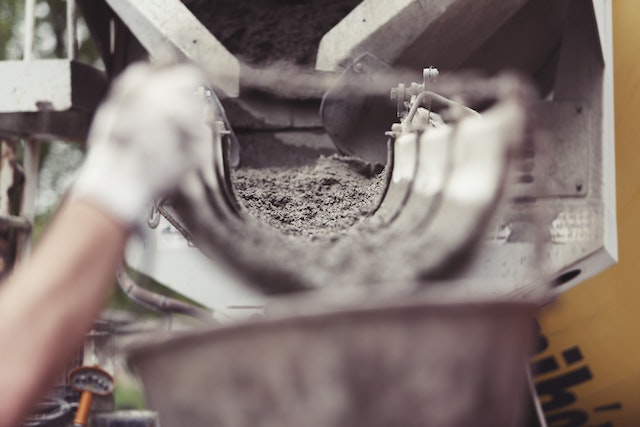
You don’t see a lot of concrete guttering today. However, if your home was built between the 1950s and 1970s, you may have concrete gutters. These, which are formally known as Finlock gutters, are made of blocks of concrete that are lined up together. While they’re lined with a waterproof material, they often have problems with drainage. In this article, we cover the problems with concrete gutters and offer some solutions.
What Are Concrete Gutters?
Concrete gutters became popular in the 1950s. Because concrete was readily available, it was a practical alternative to steel, which was scarce at that time. Concrete was durable and affordable.
It might be hard to imagine using something as heavy as concrete for a gutter. Instead of overhanging the wall, Finlock gutters usually sat at the top of a cavity wall. Cavity walls, which are usually made of two masonry surfaces with an air space between them, need flashing and guttering to keep moisture out of the open area. Concrete gutters sealed the top of the cavity and redirected rainfall.
The concrete blocks that make up these gutters are installed adjacent to one another. They’re held together with mortar and masonry rods. Then, they’re lined with a waterproofing material to drain the water away.
What Are the Problems With Concrete Gutters?
Although Finlock gutters were expected to be more reliable, it turned out that they only lasted about 30 years. These problems contributed to their failure.
Concrete Gutter Drainage Problems
Concrete gutter drainage problems are the main issue that affect Finlock guttering. Concrete is a porous material. It can trap moisture, causing problems in the cavity beneath it. When concrete is saturated with water, it can’t drain it away. The water drips into areas where it’s not wanted, causing trouble with mold and mildew growth.
Because concrete gutters often line the cavity at the top of a wall, they’re not pitched. In other words, they’re not tilted to allow the water to flow toward the downspout. This results in standing water in the gutters.
When water builds up in a concrete gutter that’s baking in the sun, it becomes a breeding ground for mold and fungal growth. If the waterproof lining is compromised, the puddles of water soak into the concrete, causing it to crack. If the standing water is heavy enough, it can cause the gutter to collapse entirely. This becomes a bigger problem in the winter, when the water expands as it freezes.
Over time, the waterproofing material on concrete gutters wears away. When this happens, you’ll experience impaired concrete gutter drainage.
Sagging Walls
Finlock gutters exert a great deal of force on the structure of your home. This doesn’t affect the masonry as much as it does the wooden areas. One way to tell if your concrete gutters have drainage problems is by looking at the windows.
Excess water and poor concrete gutter drainage can cause the wood on the window frames to weaken. As it bears down on the windows, they may be difficult to open. The window frames might also look distorted.
You could experience problems opening and closing doors. If your doors feel tight, have your concrete gutters inspected.
Uneven Gutters
While uneven gutters on an old house can look charming, they often indicate a concrete gutter drainage problem. As the gutters sag, they tilt at an angle. You might notice this when looking at the house from across the street.
Thermal Bridging
Dampness inside the home is often a sign of concrete gutter drainage problems. Do you have water stains on your ceiling or walls? Is your wallpaper peeling from the top?
Concrete gutters trap air in such a way that they create a thermal bridge. When the exterior concrete is colder than the interior masonry, condensation can build up on the interior walls. Thermal bridging is most likely to happen when the temperature varies significantly from day to night.
